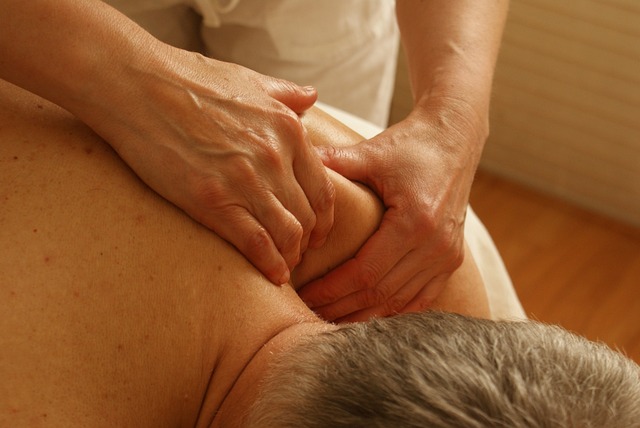Cold water immersion therapy, including cold plunges and ice baths, offers numerous health benefits such as reduced inflammation, improved circulation, and accelerated recovery for athletes. A DIY cold plunge tank at home allows for convenient access to these therapeutic effects. Effective post-immersion recovery techniques include gradual reheating and methods like ice bath therapy. These practices enhance overall well-being, combat muscle soreness, and improve mental resilience, making them appealing cryotherapy alternatives for athletes and non-athletes alike.
Discover the transformative power of cold water immersion therapy right in your home with our comprehensive guide. Explore the unlocking of numerous health benefits, from reduced inflammation to enhanced athletic performance, through this natural and effective practice. Learn how to set up a DIY cold plunge tank, master recovery techniques, and understand the science behind cryotherapy alternatives like ice bath therapy. Whether you’re an athlete seeking an edge or a wellness enthusiast, this article offers valuable insights into the world of cold water exposure therapy.
Understanding Cold Water Immersion Therapy: Unlocking the Benefits
Cold water immersion therapy, also known as cold plunge therapy or ice bath therapy, involves submerging yourself in cold water, typically below 59°F (15°C), for a short period. This practice has gained popularity due to its numerous health benefits, making it an attractive alternative to cryotherapy. The benefits of cold water therapy include reduced inflammation, improved circulation, and accelerated recovery for athletes. By exposing your body to cold water, you stimulate blood flow back from extremities to the core, enhancing oxygen delivery and nutrient absorption in muscles.
For athletes, cold water immersion can be a powerful tool for post-workout recovery, reducing muscle soreness and speeding up the repair process. It’s also been shown to improve mental clarity and focus, making it an appealing option for those looking to enhance their cognitive performance. These benefits are not just confined to athletes; anyone can incorporate cold water exposure into their daily routine as a simple yet effective self-care practice, providing a natural way to support overall health and well-being.
Setting Up Your DIY Cold Plunge Tank at Home
Setting up a DIY cold plunge tank at home is an accessible way to incorporate the benefits of cold water immersion therapy into your routine. Start by selecting a suitable container, such as a large plastic tub or an in-ground pool, ensuring it’s clean and secure from leaks. Fill the tank with cold water, adjusting the temperature to your comfort level—ideally between 50–59°F (10–15°C). Consider adding accessories like an adjustable seat or platform for stability and comfort during immersion. Place your tank in a convenient location, ensuring easy access and visibility, as this will encourage regular use.
To maximize the benefits of cold water therapy, position the tank near equipment that supports post-immersion recovery. Incorporate foam rolling, stretching, and light exercise to enhance circulation and muscle repair. Additionally, having a towel, warm clothes, and a heating pad nearby can help in the transition from cold to warmth, promoting overall well-being. For athletes, cold water immersion is an excellent recovery tool, aiding in reducing inflammation, alleviating muscle soreness, and expediting post-workout restoration, making it a valuable addition to your training regimen.
Effective Cold Water Recovery Techniques for Optimal Results
After a cold water immersion session, effective recovery techniques are essential to unlock the full potential of cold water immersion therapy. The goal is to enhance circulation and promote muscle repair while mitigating any discomfort or negative effects. One popular method is ice bath therapy, where individuals submerge their body in an ice-cold bath for a short period after exercise. This shock to the system helps reduce inflammation, decreases metabolic waste buildup, and speeds up recovery, making it particularly beneficial for cold water exposure therapy enthusiasts and athletes looking to enhance performance.
Additionally, post-immersion routines should include gradual reheating of the body through light activities like walking or stretching. This process facilitates blood flow back to the extremities while preventing a sudden rise in core temperature, which could lead to dizziness or discomfort. Incorporating these cold water recovery techniques ensures that the benefits of cold plunge therapy are maximized, offering a range of health advantages such as improved circulation, reduced muscle soreness, and increased mental resilience, making it an appealing alternative to traditional cryotherapy methods.
The Role of Cold Water Immersion in Athletic Performance and Recovery
Cold water immersion therapy has gained significant attention in the athletic community as a powerful tool for performance enhancement and recovery. By immersing oneself in cold water, typically through a cold plunge or ice bath, athletes can unlock numerous health benefits that extend beyond mere relaxation. The practice involves submerging or exposing the body to water at or below 50°F (10°C) for a set duration, often from 10 to 30 minutes. This extreme temperature change prompts a cascade of physiological responses, including reduced inflammation and muscle soreness, improved circulation, and enhanced mental clarity.
The benefits of cold water therapy are vast. For athletes, it can accelerate recovery after intense workouts or competitions, reducing delayed-onset muscle soreness and speeding up the repair process. Cold exposure therapy is also known to boost the body’s natural anti-inflammatory response, which is crucial for maintaining optimal performance. Moreover, many athletes report improved focus and mental resilience following cold water immersion sessions, making it a popular choice as a cryotherapy alternative for those seeking a more accessible and affordable way to enhance their training regimen without the need for specialized facilities.
Cold water immersion therapy offers a range of health benefits, from reducing inflammation and pain to enhancing athletic performance and recovery. By setting up a DIY cold plunge tank at home and employing effective cold water recovery techniques, you can unlock these advantages in the comfort of your own space. Cold exposure therapy is a simple yet powerful alternative to cryotherapy, providing a natural way to support overall well-being. Incorporating these practices into your routine could be a game-changer for both mental and physical health.
